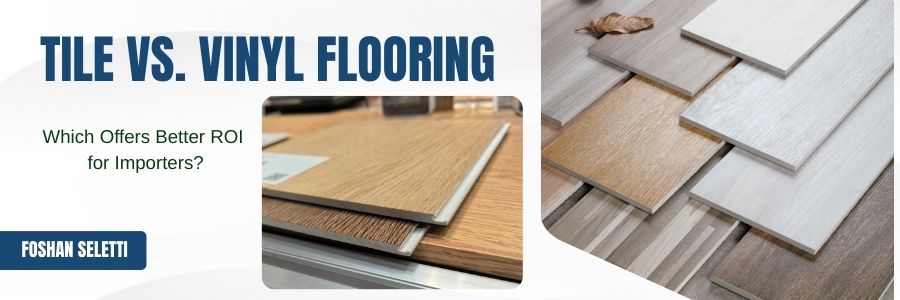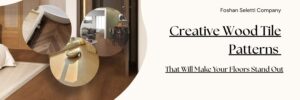Hello there! As a tile supplier with over 15 years in the Chinese ceramic industry, I’ve seen many flooring trends come and go. Today, I want to share some insights about two popular flooring options: ceramic tile and vinyl flooring.
If you’re an importer or distributor looking to expand your product range, understanding the differences between these materials is crucial for your business success. Let’s dive into what makes each unique and why one might be better for your specific market needs.
Market Overview: Tiles and Vinyl Flooring
The global flooring market continues to grow steadily. In recent years, both tile and vinyl have gained significant market share:
- Ceramic and porcelain tiles remain dominant in warm-climate regions like Asia, Africa, Southern Europe, Middle East, and Latin America
- Vinyl flooring has seen rapid growth in North America, Northern Europe, and Australia
For importers, it’s worth noting that while the initial cost of vinyl is often lower, the profit margins on quality porcelain tiles typically range 5-10% higher. This difference becomes significant when dealing with large-volume orders.
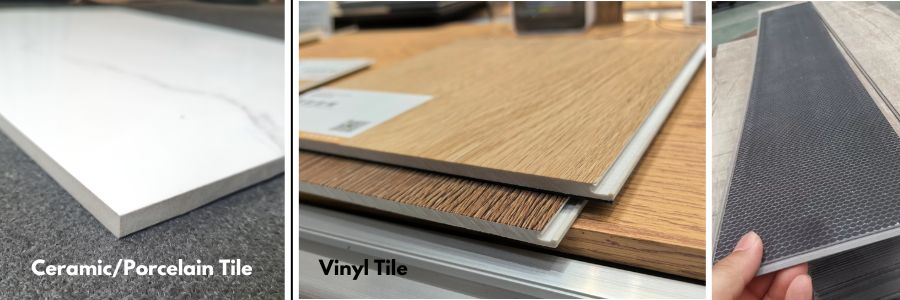
Physical Properties Comparison
Let me break down the key differences in what these materials are actually made of:
| Property | Ceramic/Porcelain Tile | Vinyl Flooring |
|---|---|---|
| Composition | Clay, sand, and natural materials fired at high temperatures | PVC, plasticizers, fiberglass, and printed design layer |
| Thickness | 8-12mm typically | 2-8mm typically |
| Weight | Heavy (20-24kg per m²) | Light (3-5kg per m²) |
The weight difference is especially important for you as an importer. A container of vinyl flooring can hold approximately 3 times more square footage than the same container filled with ceramic tiles. This significantly impacts your shipping costs per unit.
Performance Analysis
When your customers ask about durability, here’s what you need to know:
Water Resistance
Both materials perform well against water, but in different ways:
- Tiles are inherently waterproof through their entire structure
- Vinyl has a waterproof surface but can have vulnerable seams where water can penetrate
Temperature Resistance
This is where the differences really show:
- Tiles can withstand extreme temperatures without warping or discoloration
- Vinyl may expand, contract, or fade when exposed to direct sunlight or extreme heat
For markets with high temperature variations, tiles offer a clear advantage that you can highlight to your customers.
Installation Considerations for Distributors
Your contractors and installers will care about these differences:
Tile Installation:
- Requires proper subfloor preparation
- Needs specialized cutting tools and skilled labor
- Takes longer to install
- Requires grouting and sealing
Vinyl Installation:
- Can often be installed over existing flooring
- Requires minimal tools
- Installation is faster (about 50% less time than tile)
- Many options are DIY-friendly with click-lock systems
If your market has high labor costs, the easier installation of vinyl becomes a significant selling point.
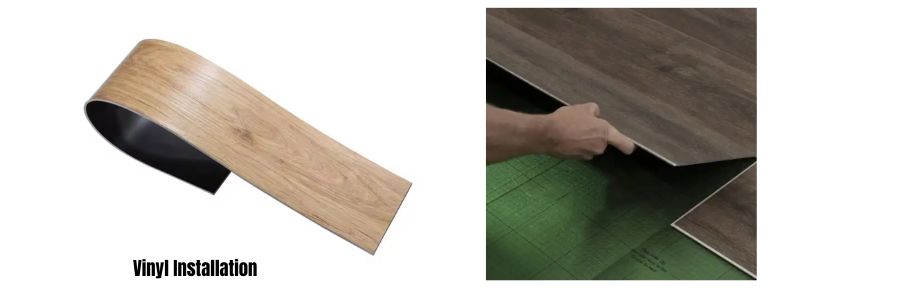
Vinyl Flooring vs Tile: Long-Term ROI Factors
As a supplier, I always emphasize the lifetime value to my customers:
Tile flooring Lifespan and Maintenance:
- Typically lasts 30-50+ years when properly installed
- Resistant to scratches, dents, and fading
- Low maintenance requirements (simple cleaning)
- Rarely needs replacement
Vinyl flooring Lifespan and Maintenance:
- Quality Luxury Vinyl Tiles (LVT) lasts 10-20 years
- More susceptible to damage from heavy furniture
- Easy daily cleaning but can be damaged by harsh chemicals
- Will need replacement 2-3 times in the lifespan of a single tile installation
For your customers focused on long-term property management, the extended lifespan of ceramic or porcelain tile translates to substantial savings despite higher upfront costs.
Environmental Considerations
Today’s consumers increasingly care about sustainability:
Tile Environmental Profile:
- Made from natural materials
- Energy-intensive production process
- Extremely long lifespan reduces replacement waste
- Inert material that doesn’t emit VOCs
- Can be crushed and recycled at end of life
Vinyl Environmental Profile:
- Petroleum-based product
- Less energy-intensive production
- Shorter lifespan means more frequent replacement
- May emit low levels of VOCs (though modern products are improving)
- Difficult to recycle completely
If your target market values green building certifications, our ceramic tiles offer several advantages worth highlighting in your marketing materials.
Importing Logistics Comparison
As an importer, these practical considerations will affect your bottom line:
Tile Importing Considerations:
- Higher shipping costs due to weight
- Requires careful handling to prevent breakage (typically 1-3% breakage in transit)
- Longer lead times (typically 30-45 days)
- No special storage requirements
Vinyl Tile Importing Considerations:
- Lower shipping costs
- Minimal breakage concerns
- Often shorter lead times (20-30 days)
- Needs temperature-controlled storage to prevent warping
Customer Segment Analysis
Understanding which customers prefer each material helps you target your marketing effectively:
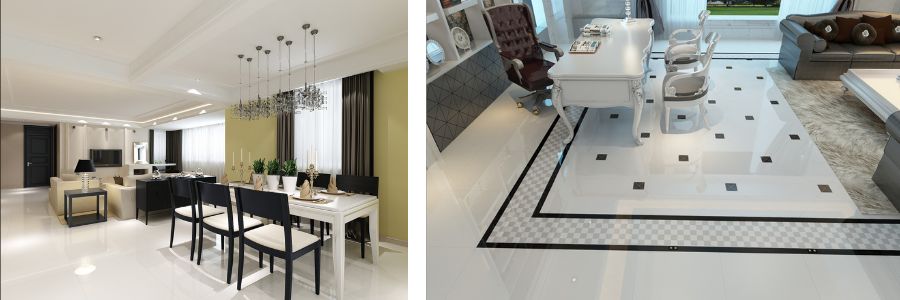
Tile Tends to Appeal To:
- Luxury and high-end residential projects
- Commercial spaces with high foot traffic
- Who want more design and style options
- Hot climate regions
- Customers concerned with longevity and property value
- Healthcare and hospitality sectors requiring sanitary surfaces
Vinyl Tile Tends to Appeal To:
- Budget-conscious residential customers
- Rental property owners
- DIY market
- Spaces requiring quick/easy installation and immediate availability
- Customers in colder climates wanting warmer underfoot feel and noise reduction
By stocking both options, you can meet the needs of different market segments while positioning tile as the premium, long-lasting option.
Conclusion
Both tile and vinyl flooring have their place in a well-rounded product portfolio. As a Chinese tile supplier, I naturally believe in the superior value proposition of ceramic and porcelain tiles, particularly for:
- Long-term investment properties
- High-traffic commercial spaces
- Luxury residential projects
- Hot climates
- Customers concerned with indoor air quality
However, vinyl tile fills an important niche for budget-conscious projects, rental properties, and markets where quick installation is prioritized over longevity.
The best strategy for most importers is to offer both options, positioning ceramic tile as your premium, high-margin product while using vinyl to meet price-sensitive market segments.
Want to learn more about importing quality tiles from China? Check out our other comparison guides:
- Tile vs Wood Flooring: Pros, Cons and Market Opportunit
- Porcelain vs Marble: Cost, Durability and Maintenance Comparison
- Carpet vs Tile: The Ultimate Flooring Comparison Guide

Ready to expand your flooring portfolio with high-quality Chinese tiles? Contact us today for wholesale pricing and sample options.

